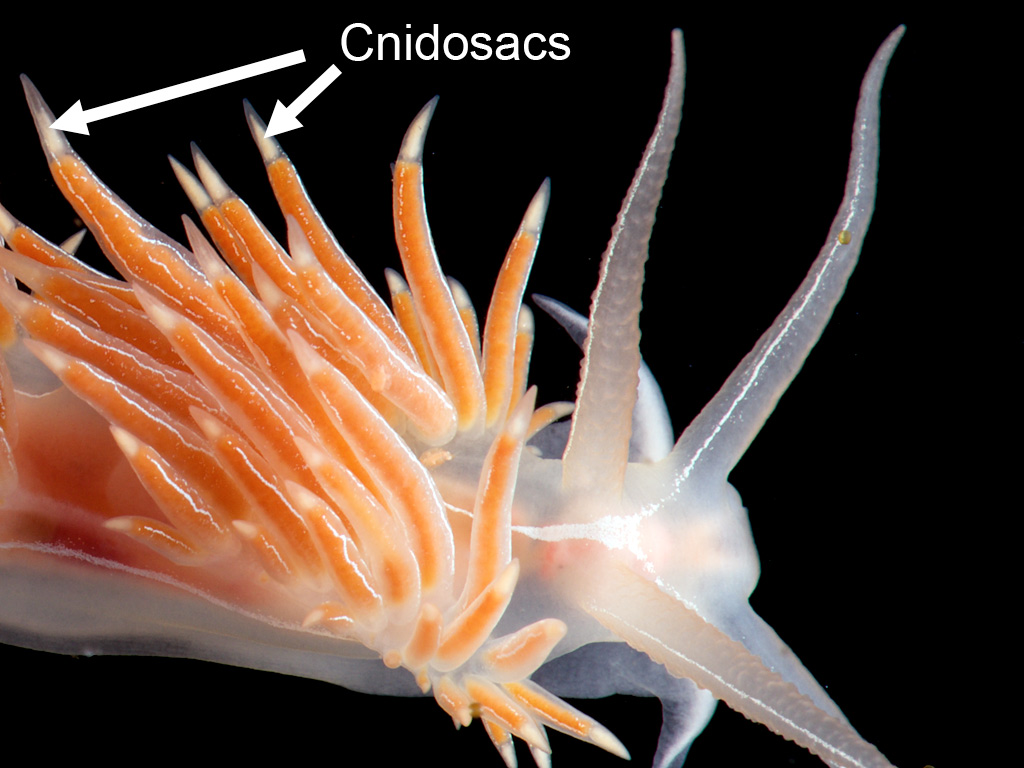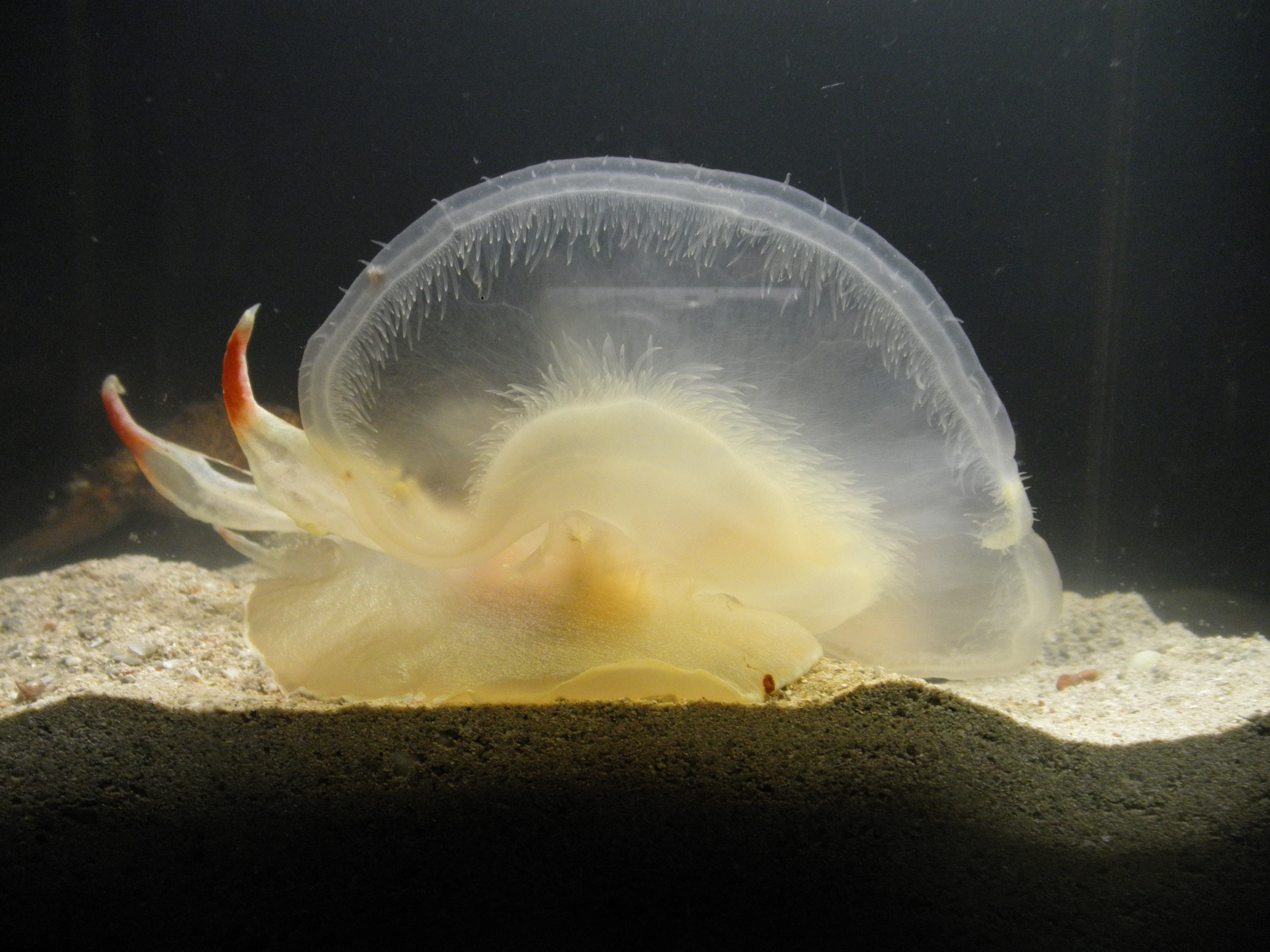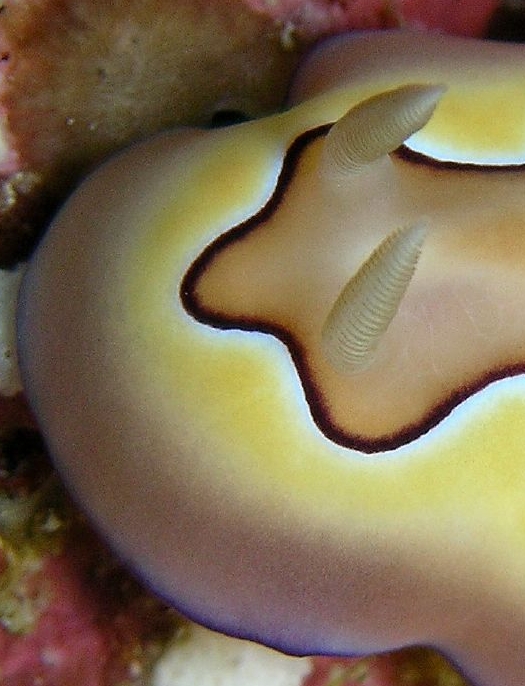|
Tethys Fimbria
''Tethys fimbria'' is a species of predatory sea slug, a nudibranch, a marine gastropod mollusk in the family Tethydidae. ICZN opinion 200 ruled that ''Tethys fimbria'' is a valid name and ''Tethys leporina'' Linnaeus, 1758 is a synonym."''Tethys fimbria'' Linné 1767 " CLEMAM, accessed 29 December 2010. Distribution The distribution of ''Tethys fimbria'' includes the and the east coast of the from Portugal in the north, to the |
Cerata
:''The tortrix moth genus ''Cerata'' is considered a junior synonym of ''Cydia. Cerata, singular ceras, are anatomical structures found externally in nudibranch sea slugs, especially in aeolid nudibranchs, marine opisthobranch gastropod mollusks in the clade Aeolidida. The word ceras comes from the Greek word "κέρας", meaning "horn", a reference to the shape of these structures. Cerata are dorsal and lateral outgrowths on the upper surfaces of the body of these nudibranchs. Function Cerata greatly extend the surface area of nudibranchs and aid in respiration, the process of gas exchange for metabolic use. Cerata are also used, in some cases, for attack and defense. In many aeolid nudibranchs, the digestive system extends into the cerata. These nudibranchs eat stinging celled animals (Cnidarians) such as anemones, hydroids and sea fans or Portuguese men o' war. The stinging cells or nematocyst A cnidocyte (also known as a cnidoblast or nematocyte) is an explosi ... [...More Info...] [...Related Items...] OR: [Wikipedia] [Google] [Baidu] |
Predatory
Predation is a biological interaction where one organism, the predator, kills and eats another organism, its prey. It is one of a family of common feeding behaviours that includes parasitism and micropredation (which usually do not kill the host) and parasitoidism (which always does, eventually). It is distinct from scavenging on dead prey, though many predators also scavenge; it overlaps with herbivory, as seed predators and destructive frugivores are predators. Predators may actively search for or pursue prey or wait for it, often concealed. When prey is detected, the predator assesses whether to attack it. This may involve ambush or pursuit predation, sometimes after stalking the prey. If the attack is successful, the predator kills the prey, removes any inedible parts like the shell or spines, and eats it. Predators are adapted and often highly specialized for hunting, with acute senses such as vision, hearing, or smell. Many predatory animals, both vertebrate ... [...More Info...] [...Related Items...] OR: [Wikipedia] [Google] [Baidu] |
Tethys Fimbria Velum
Tethys or Tethis may refer to: * Tethys (database), an online knowledge management system about the environmental effects of offshore renewable energy * ''Tethys'' (gastropod), genus of gastropods in the family Tethydidae * Tethys (moon), a natural satellite of Saturn * Tethys (mythology), a Titaness in Greek mythology * ''Thetys'' (salp), a genus of gelatinous sea salp * Tethys Ocean, a Mesozoic-era ocean between the continents of Gondwana and Laurasia * Tethys Research Institute, a non-governmental scientific organisation based in Italy * "Tethys", a song from ''The Ocean of the Sky'' by The Used * Tethys, the Japanese name for "Thetis", a boss character in ''Mega Man ZX Advent'' * Tethys River, an interplanetary waterway in Dan Simmons's '' Hyperion Cantos'' See also *Thetis (other) Thetis is a sea nymph in Greek mythology. Thetis (or Thetys) may also refer to: Greek Mythology * Thetis is also the name of a Hesperid. Astronomy * 17 Thetis, an asteroid * Theti ... [...More Info...] [...Related Items...] OR: [Wikipedia] [Google] [Baidu] |
Tethys Fimbria
''Tethys fimbria'' is a species of predatory sea slug, a nudibranch, a marine gastropod mollusk in the family Tethydidae. ICZN opinion 200 ruled that ''Tethys fimbria'' is a valid name and ''Tethys leporina'' Linnaeus, 1758 is a synonym."''Tethys fimbria'' Linné 1767 " CLEMAM, accessed 29 December 2010. Distribution The distribution of ''Tethys fimbria'' includes the and the east coast of the from Portugal in the north, to the |
Radula
The radula (, ; plural radulae or radulas) is an anatomical structure used by molluscs for feeding, sometimes compared to a tongue. It is a minutely toothed, chitinous ribbon, which is typically used for scraping or cutting food before the food enters the esophagus. The radula is unique to the molluscs, and is found in every class of mollusc except the bivalves, which instead use cilia, waving filaments that bring minute organisms to the mouth. Within the gastropods, the radula is used in feeding by both herbivorous and carnivorous snails and slugs. The arrangement of teeth ( denticles) on the radular ribbon varies considerably from one group to another. In most of the more ancient lineages of gastropods, the radula is used to graze, by scraping diatoms and other microscopic algae off rock surfaces and other substrates. Predatory marine snails such as the Naticidae use the radula plus an acidic secretion to bore through the shell of other molluscs. Other predatory marine sn ... [...More Info...] [...Related Items...] OR: [Wikipedia] [Google] [Baidu] |
Rhinophores
A rhinophore is one of a pair of chemosensory club-shaped, rod-shaped or ear-like structures which are the most prominent part of the external head anatomy in sea slugs, marine gastropod opisthobranch mollusks such as the nudibranchs, sea hares (Aplysiomorpha), and sap-sucking sea slugs (Sacoglossa). Etymology The name relates to the rhinophore's function as an organ of "smell". ''Rhino-'' means nose from Ancient Greek ῥίς ''rhis'' and from its genitive ῥινός ''rhinos''. "Phore" means "to bear" from New Latin ''-phorus'' and from Greek -phoros (φορος) "bearing", a derivative of ''phérein'' (φέρειν). Function Rhinophores are scent or taste receptors, also known as chemosensory organs situated on the dorsal surface of the head. They are primarily used for distance chemoreception and rheoreception (response to water current). The "scents" detected by rhinophores are chemicals dissolved in the sea water. The fine structure and hairs of the rhinophore ... [...More Info...] [...Related Items...] OR: [Wikipedia] [Google] [Baidu] |
Gulf Of Guinea
The Gulf of Guinea is the northeasternmost part of the tropical Atlantic Ocean from Cape Lopez in Gabon, north and west to Cape Palmas in Liberia. The intersection of the Equator and Prime Meridian (zero degrees latitude and longitude) is in the gulf. Among the many rivers that drain into the Gulf of Guinea are the Niger and the Volta. The coastline on the gulf includes the Bight of Benin and the Bight of Bonny. Name The origin of the name Guinea is thought to be an area in the region, although the specifics are disputed. Bovill (1995) gives a thorough description: The name " Guinea" was also applied to south coast of West Africa, north of the Gulf of Guinea, which became known as "Upper Guinea", and the west coast of Southern Africa, to the east, which became known as "Lower Guinea". The name "Guinea" is still attached to the names of three countries in Africa: Guinea, Guinea-Bissau, and Equatorial Guinea, as well as New Guinea in Melanesia. Geography The main river she ... [...More Info...] [...Related Items...] OR: [Wikipedia] [Google] [Baidu] |
Atlantic Ocean
The Atlantic Ocean is the second-largest of the world's five oceans, with an area of about . It covers approximately 20% of Earth#Surface, Earth's surface and about 29% of its water surface area. It is known to separate the "Old World" of Africa, Europe and Asia from the "New World" of the Americas in the European perception of Earth, the World. The Atlantic Ocean occupies an elongated, S-shaped basin extending longitudinally between Europe and Africa to the east, and North America, North and South America to the west. As one component of the interconnected World Ocean, it is connected in the north to the Arctic Ocean, to the Pacific Ocean in the southwest, the Indian Ocean in the southeast, and the Southern Ocean in the south (other definitions describe the Atlantic as extending southward to Antarctica). The Atlantic Ocean is divided in two parts, by the Equatorial Counter Current, with the North(ern) Atlantic Ocean and the South(ern) Atlantic Ocean split at about 8th paralle ... [...More Info...] [...Related Items...] OR: [Wikipedia] [Google] [Baidu] |
Mediterranean Sea
The Mediterranean Sea is a sea connected to the Atlantic Ocean, surrounded by the Mediterranean Basin and almost completely enclosed by land: on the north by Western and Southern Europe and Anatolia, on the south by North Africa, and on the east by the Levant. The Sea has played a central role in the history of Western civilization. Geological evidence indicates that around 5.9 million years ago, the Mediterranean was cut off from the Atlantic and was partly or completely desiccated over a period of some 600,000 years during the Messinian salinity crisis before being refilled by the Zanclean flood about 5.3 million years ago. The Mediterranean Sea covers an area of about , representing 0.7% of the global ocean surface, but its connection to the Atlantic via the Strait of Gibraltar—the narrow strait that connects the Atlantic Ocean to the Mediterranean Sea and separates the Iberian Peninsula in Europe from Morocco in Africa—is only wide. The Mediterranean ... [...More Info...] [...Related Items...] OR: [Wikipedia] [Google] [Baidu] |
International Commission On Zoological Nomenclature
The International Commission on Zoological Nomenclature (ICZN) is an organization dedicated to "achieving stability and sense in the scientific naming of animals". Founded in 1895, it currently comprises 26 commissioners from 20 countries. Organization The ICZN is governed by the "Constitution of the ICZN", which is usually published together with the ICZN Code. Members are elected by the Section of Zoological Nomenclature, established by the International Union of Biological Sciences (IUBS). The regular term of service of a member of the Commission is six years. Members can be re-elected up to a total of three full six-year terms in a row. After 18 continuous years of elected service, a break of at least three years is prescribed before the member can stand again for election. Activities Since 2014, the work of the Commission is supported by a small secretariat based at the National University of Singapore, in Singapore. Previously, the secretariat was based in London and ... [...More Info...] [...Related Items...] OR: [Wikipedia] [Google] [Baidu] |
Mollusk
Mollusca is the second-largest phylum of invertebrate animals after the Arthropoda, the members of which are known as molluscs or mollusks (). Around 85,000 extant species of molluscs are recognized. The number of fossil species is estimated between 60,000 and 100,000 additional species. The proportion of undescribed species is very high. Many taxa remain poorly studied. Molluscs are the largest marine phylum, comprising about 23% of all the named marine organisms. Numerous molluscs also live in freshwater and terrestrial habitats. They are highly diverse, not just in size and anatomical structure, but also in behaviour and habitat. The phylum is typically divided into 7 or 8 taxonomic classes, of which two are entirely extinct. Cephalopod molluscs, such as squid, cuttlefish, and octopuses, are among the most neurologically advanced of all invertebrates—and either the giant squid or the colossal squid is the largest known invertebrate species. The ... [...More Info...] [...Related Items...] OR: [Wikipedia] [Google] [Baidu] |
Gastropod
The gastropods (), commonly known as snails and slugs, belong to a large taxonomic class of invertebrates within the phylum Mollusca called Gastropoda (). This class comprises snails and slugs from saltwater, from freshwater, and from land. There are many thousands of species of sea snails and slugs, as well as freshwater snails, freshwater limpets, and land snails and slugs. The class Gastropoda contains a vast total of named species, second only to the insects in overall number. The fossil history of this class goes back to the Late Cambrian. , 721 families of gastropods are known, of which 245 are extinct and appear only in the fossil record, while 476 are currently extant with or without a fossil record. Gastropoda (previously known as univalves and sometimes spelled "Gasteropoda") are a major part of the phylum Mollusca, and are the most highly diversified class in the phylum, with 65,000 to 80,000 living snail and slug species. The anatomy, behavior, feeding, a ... [...More Info...] [...Related Items...] OR: [Wikipedia] [Google] [Baidu] |


_with_its_prey.jpg)






